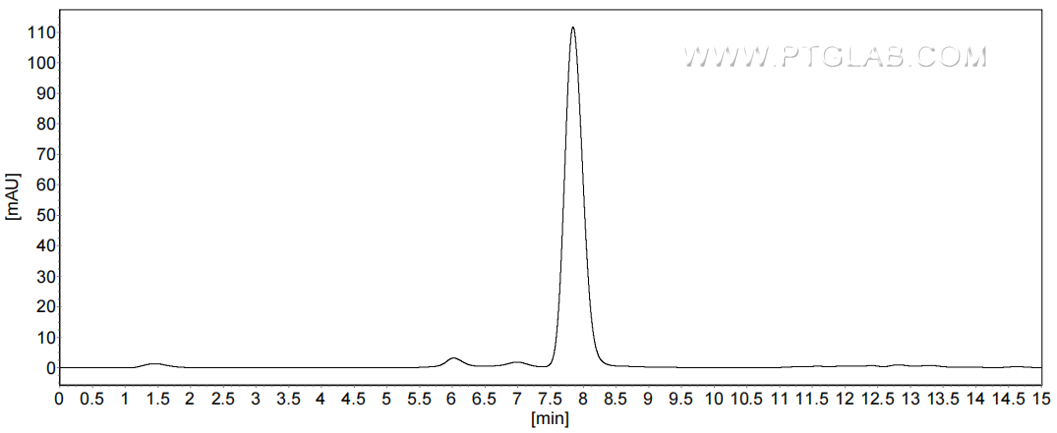Recombinant Mouse AFP protein (His Tag)(HPLC verified)
种属
Mouse
纯度
>90 %, SDS-PAGE
>90 %, SEC-HPLC
标签
His Tag
生物活性
未测试
验证数据展示
产品信息
| 纯度 | >90 %, SDS-PAGE >90 %, SEC-HPLC |
| 内毒素 | <0.1 EU/μg protein, LAL method |
| 生物活性 |
Not tested |
| 来源 | HEK293-derived Mouse AFP protein Lys19-Val605 (Accession# P02772) with a His tag at the C-terminus. |
| 基因ID | 11576 |
| 蛋白编号 | P02772 |
| 预测分子量 | 66.4 kDa |
| SDS-PAGE | 60-75 kDa, reducing (R) conditions |
| 组分 | Lyophilized from 0.22 μm filtered solution in PBS, pH 7.4. Normally 5% trehalose and 5% mannitol are added as protectants before lyophilization. |
| 复溶 | Briefly centrifuge the tube before opening. Reconstitute at 0.1-0.5 mg/mL in sterile water. |
| 储存条件 |
It is recommended that the protein be aliquoted for optimal storage. Avoid repeated freeze-thaw cycles.
|
| 运输条件 | The product is shipped at ambient temperature. Upon receipt, store it immediately at the recommended temperature. |
背景信息
AFP (alpha-fetoprotein) is a major plasma protein found in the fetus while plasma AFP level is decreased rapidly after birth. AFP is a vital marker of the hepatocyte lineage. High AFP concentrations is related with tumor cell growth. Detection of AFP in plasma is important in diagnosis of hepatocellular carcinoma (HCC), stomach cancer and germ cell cancers. Altered levels of both fetal and maternal AFP are associated with hypothyroidism, autoimmune disorders, and heart defects. Measurement of AFP in maternal blood or amniotic fluid of pregnant women is used in screening developmental abnormalities such as aneuploidy. Serum AFP level is elevated in people with developmental birth defects and neurologic disorders.
参考文献:
1. Rosen T, et al. (2005). Semin Perinatol. 29(6):367-75. 2. Schieving JH, et al. (2014). Eur J Paediatr Neurol. 18(3):243-8. 3. Wang X, et al. (2018). Can J Gastroenterol Hepatol. 9;2018:1232785. 4. Başbuğ D, et al. (2017). Ginekol Pol. 88(6):325-330.



